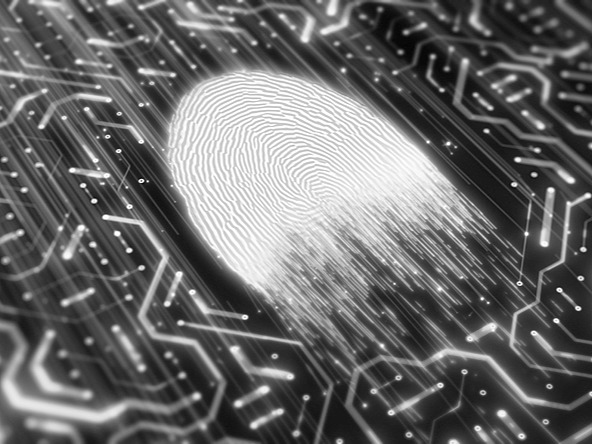Understanding biometrics in research

The International Organization for Standardization and International Electrotechnical Commission standards bodies have defined biometrics as the automated recognition of individuals based on their biological and behavioural characteristics.
Biometrics is a biological measurement – or set of physical characteristics – that can be used to identify individuals. It uses a variety of technologies that mobilise probabilistic matching to recognise a person based on their biometric characteristics. Biometric characteristics can be physiological features – such as a person’s fingerprint, iris or hand geometry – or behavioural attributes, such as a person’s gait or keystroke pattern.
As biometric characteristics are generally unique to individuals, they can be more effective and reliable at uniquely verifying the identity of individuals compared with other methods – for example, traditional verification systems such as a password or personal identification number.
One key advantage of biometric technologies is that they cannot be as easily shared, lost or duplicated as passwords or physical identity.
As such, biometrics are increasingly used in identity management. For example, a large range of technology companies employ mobile biometric authentication for their products or for the use of apps. At present, biometric data is largely employed for the purposes of human authentication.
Biometrics has traditionally existed in the silos of physiological and neuroscience studies, and in user experience or user interface design. However, businesses have caught on quickly to the wealth of information that biometrics can produce. As a result, they are moving toward matching this data with website usability tests to deliver masses of information.
What does biometrics in market research look like? A typical scenario could be:
- Sample is recruited and brought to a focus group facility or market research setting
- The participant is asked to don galvanic skin-response sensors on one hand
- They are then asked to surf through a website. They may be sitting next to a researcher who asks them questions, or they may be self-directed so that the research team can see how they naturally navigate through their experience
- Depending on the technology employed, they will either have face sensors attached or their responses and eye tracking will be captured through video
- The results are added to the data collection, which will later be sorted and analysed by the business commissioning the study.
In the case of neuromarketing market research, biometrics has several applications that are used to understand research subjects’ cognitive and emotional responses toward certain stimuli.
Biometrics market research gives researchers an opportunity to observe and map subjects’ responses toward a certain product or service without disrupting the process. The results gained from the research are usually accurate, as most biometric systems aim to gauge the subconscious part of the mind, therefore producing an almost pure, untainted response – although there are caveats to this.
As mentioned above, during the research process participants may be asked to surf through a website while seated next to a researcher, who asks them questions (this, of course, causes interference), or they may be self-directed, so that the research team can see how they naturally navigate through their experience. While biometric data goes beyond the cerebral cortex (the conscious mind) into the subconscious, it is still useful to remain inquisitive about the shortcomings of biometrics and continue to test its application and success. Though we may desire it, biometric technologies are not an infinite source of information. Tools used in biometric market research include:
- Functional magnetic resonance imaging, used to measure the activity in the brain caused by changes in the blood flow
- Electroencephalogram, used to measure changes in brain-wave activities
- Observational analytics, involving examining participants’ reactions toward a certain stimulus.
What are some of the risks?
Biometrics can pose challenges to privacy. Although biometrics is not intrinsically incompatible with privacy, how systems are designed and used determines the extent to which it improves or contravenes people’s privacy.
A key challenge facing the adoption of biometrics in market research is consent. This is typically based on a transactional model – in short, individuals are able to make choices about the use of their personal information, such as what information is collected and when, and how it is used.
However, if the collection of biometric information is passive, it is unlikely that individuals can provide explicit consent (as is required by General Data Protection Regulation legislation) or exercise control over the type of data collected, how it is used, the general subject of the data collection, or the purpose of the data collection, particularly special category and/or criminal convictions data. Simply put, individuals may not know what exactly is being asked of them.
Biometrics has vast benefits for market research, advancing and enhancing data collection and the quality of the data. However, there are critical questions to consider with the adoption of biometric use, such as cost and privacy requirements.
MRS is currently preparing a guidance document on biometrics for researchers, set to be available during 2023.

We hope you enjoyed this article.
Research Live is published by MRS.
The Market Research Society (MRS) exists to promote and protect the research sector, showcasing how research delivers impact for businesses and government.
Members of MRS enjoy many benefits including tailoured policy guidance, discounts on training and conferences, and access to member-only content.
For example, there's an archive of winning case studies from over a decade of MRS Awards.
Find out more about the benefits of joining MRS here.














0 Comments